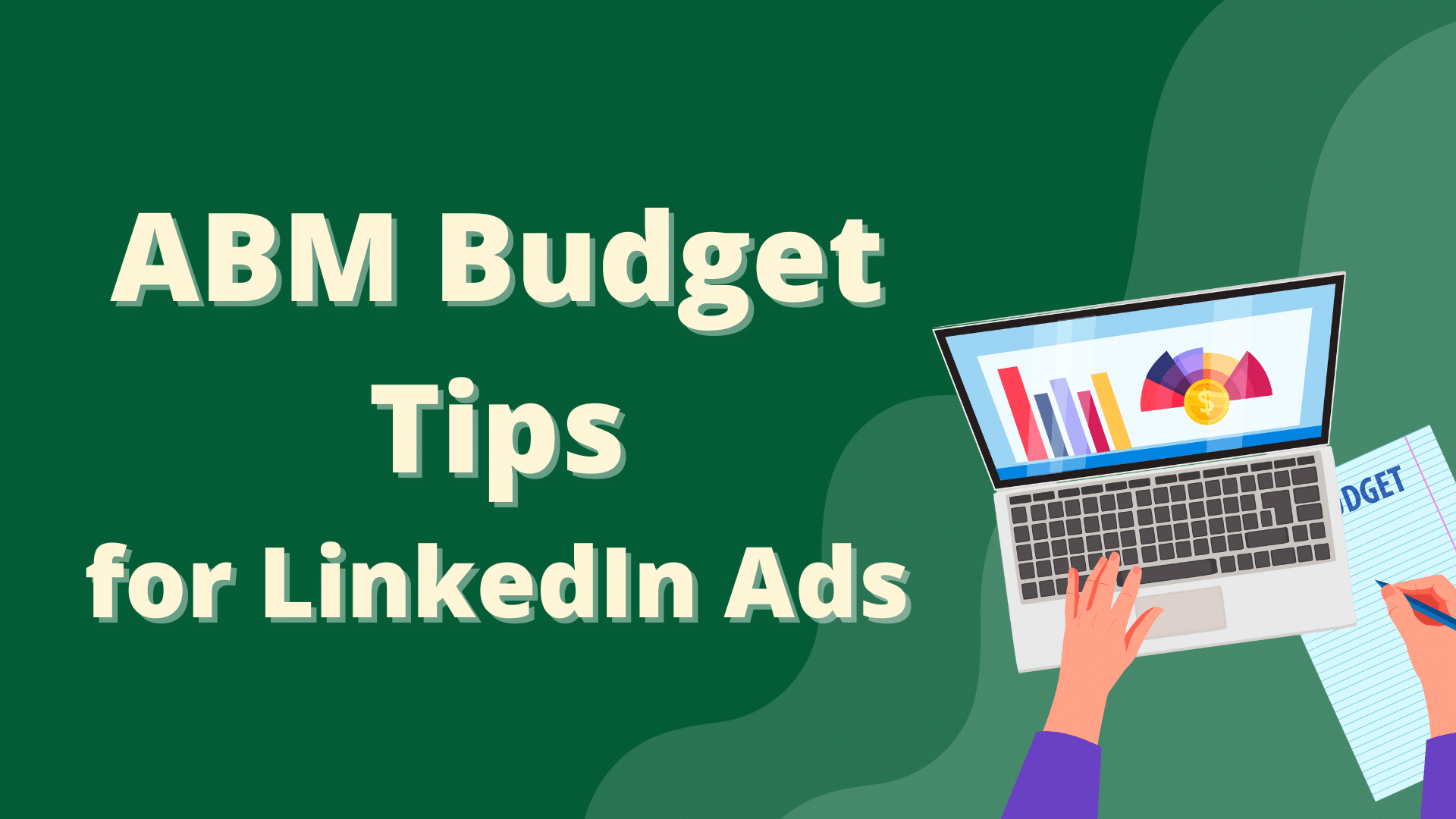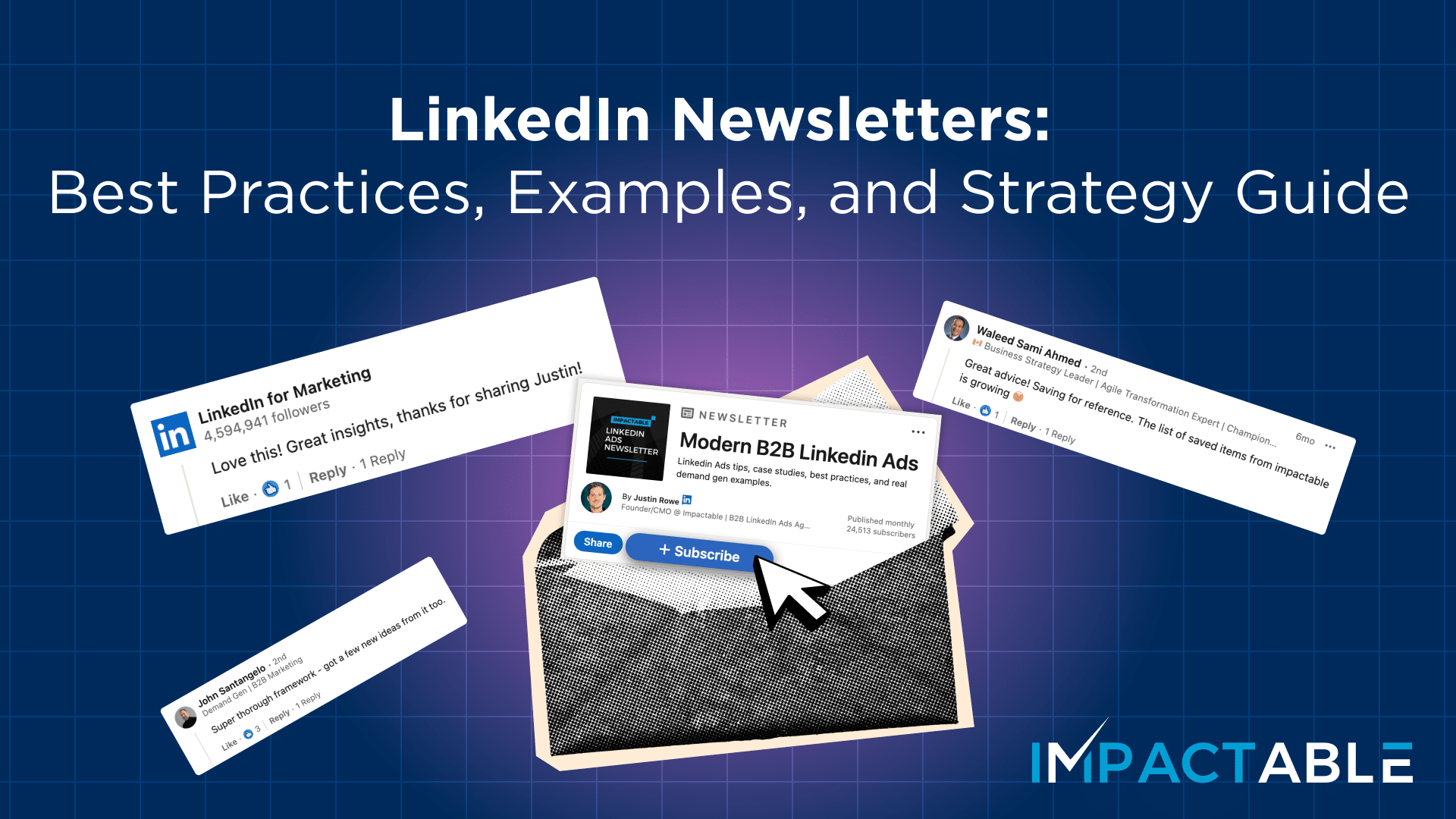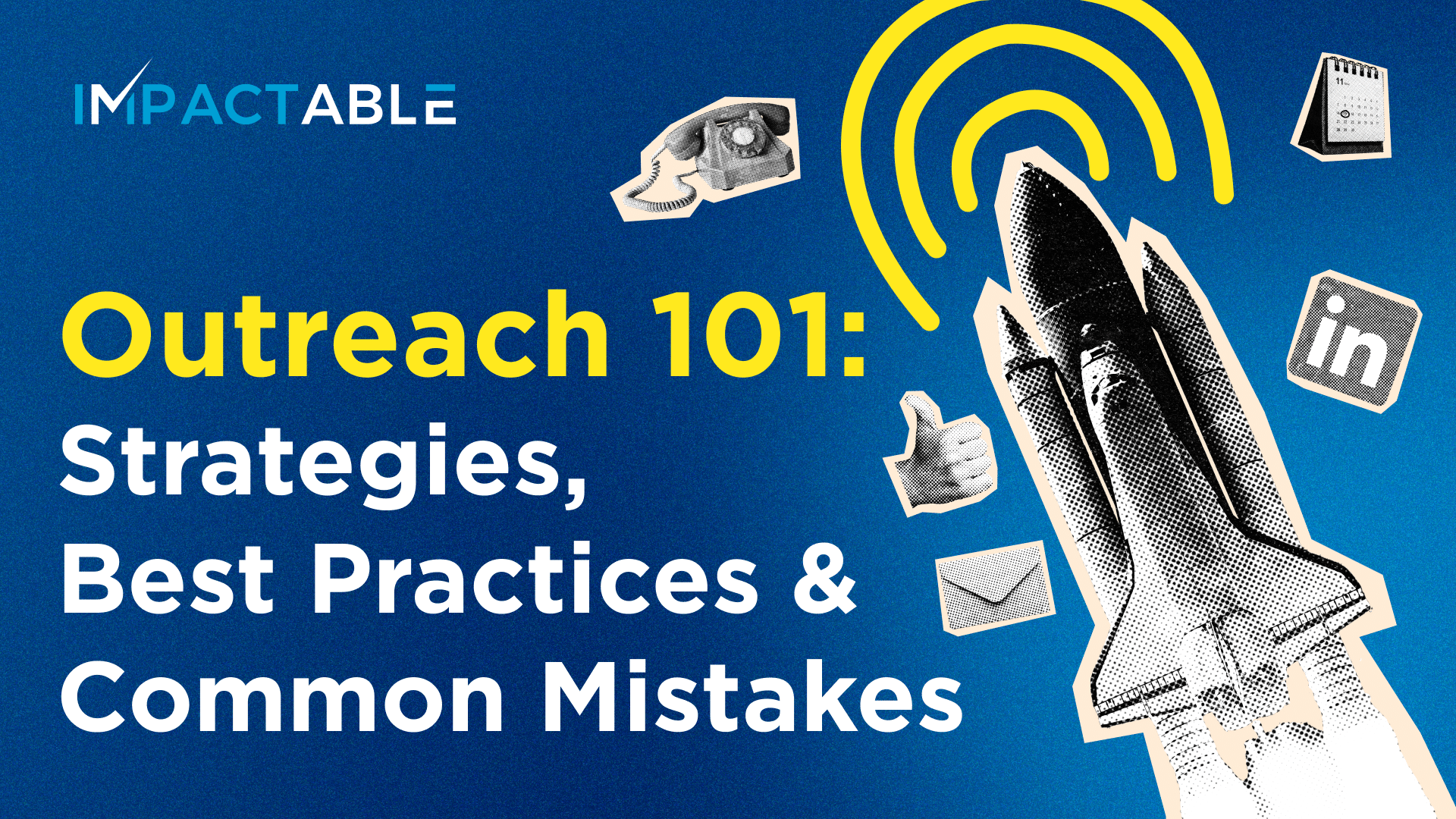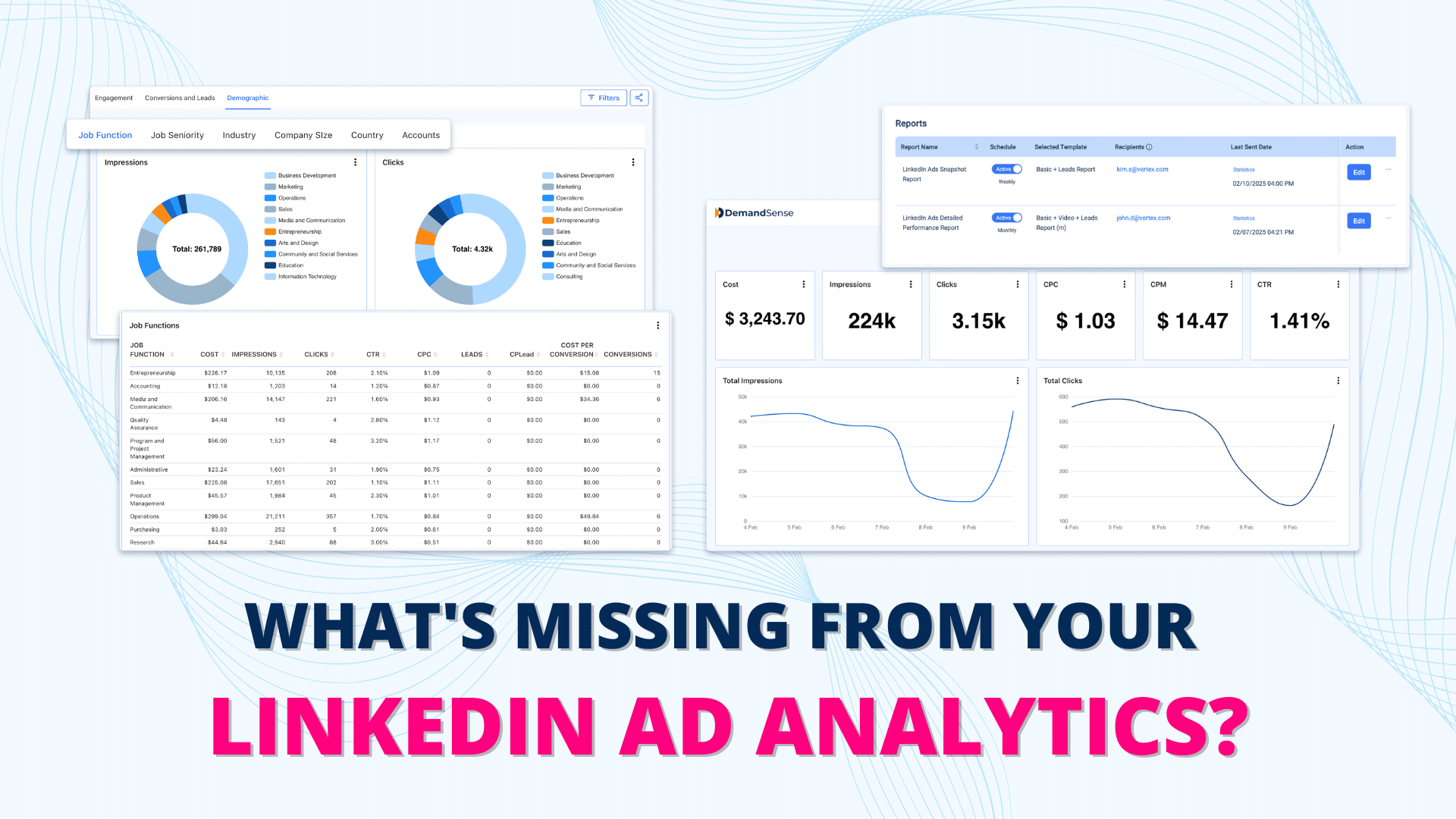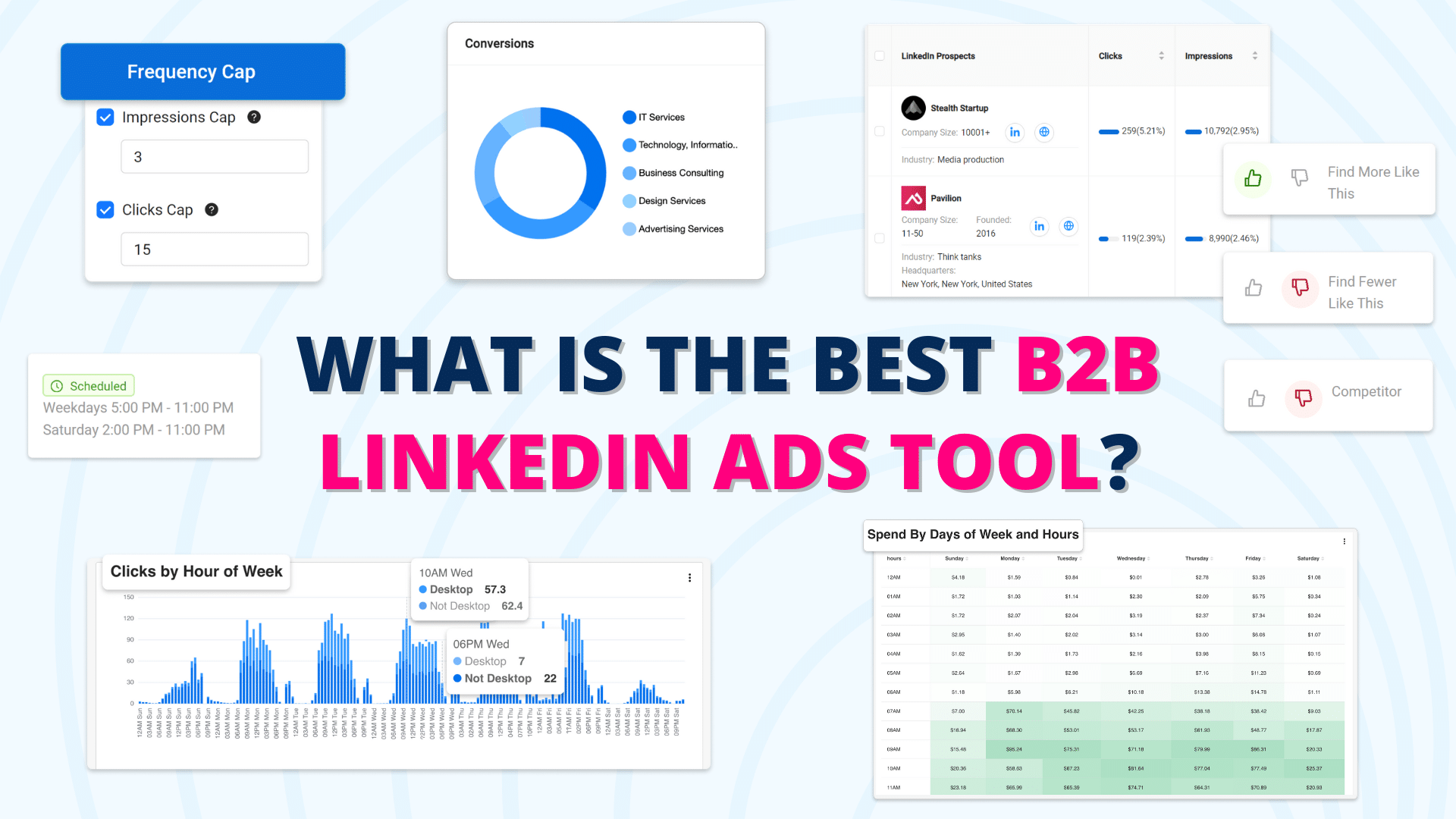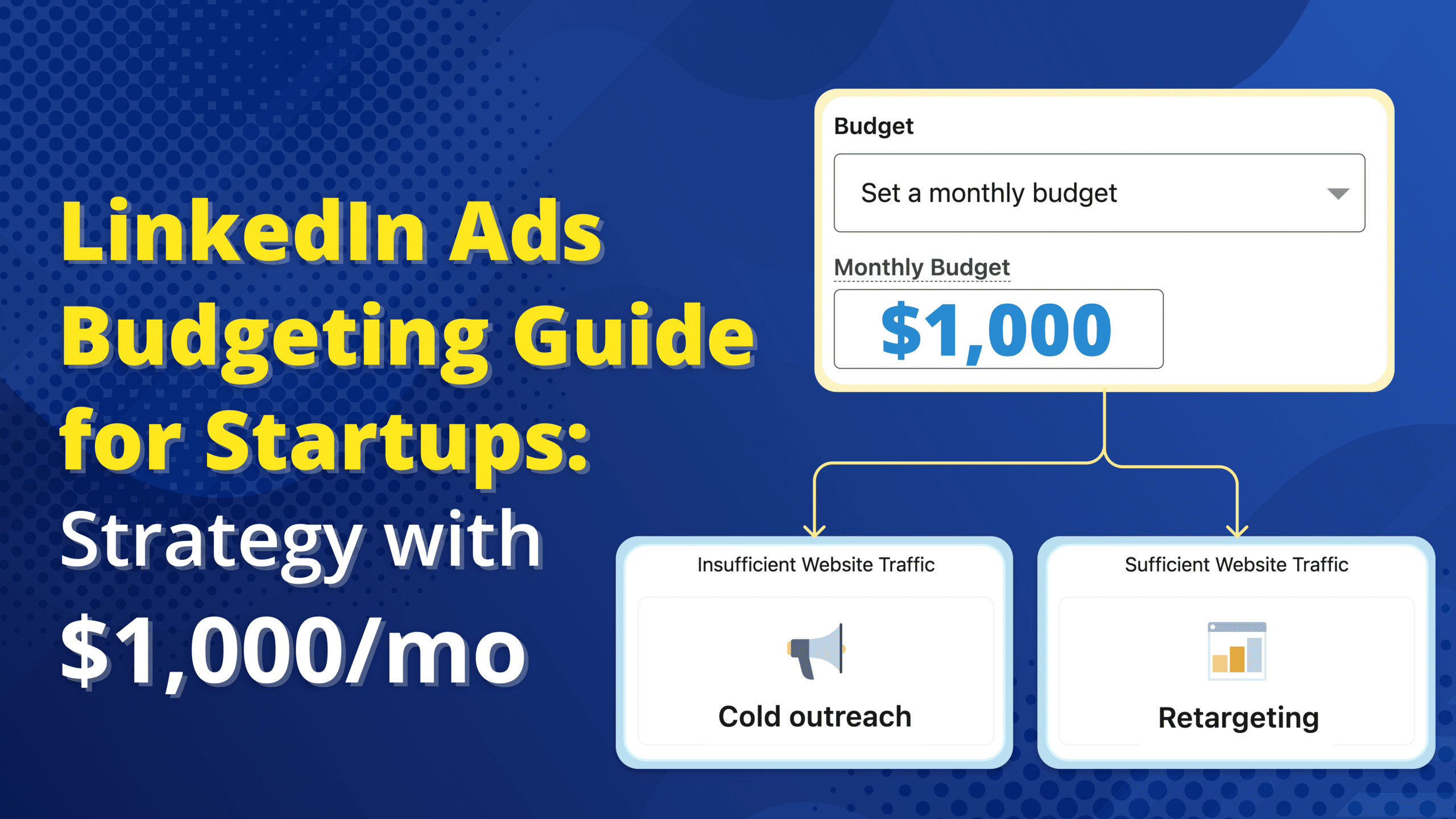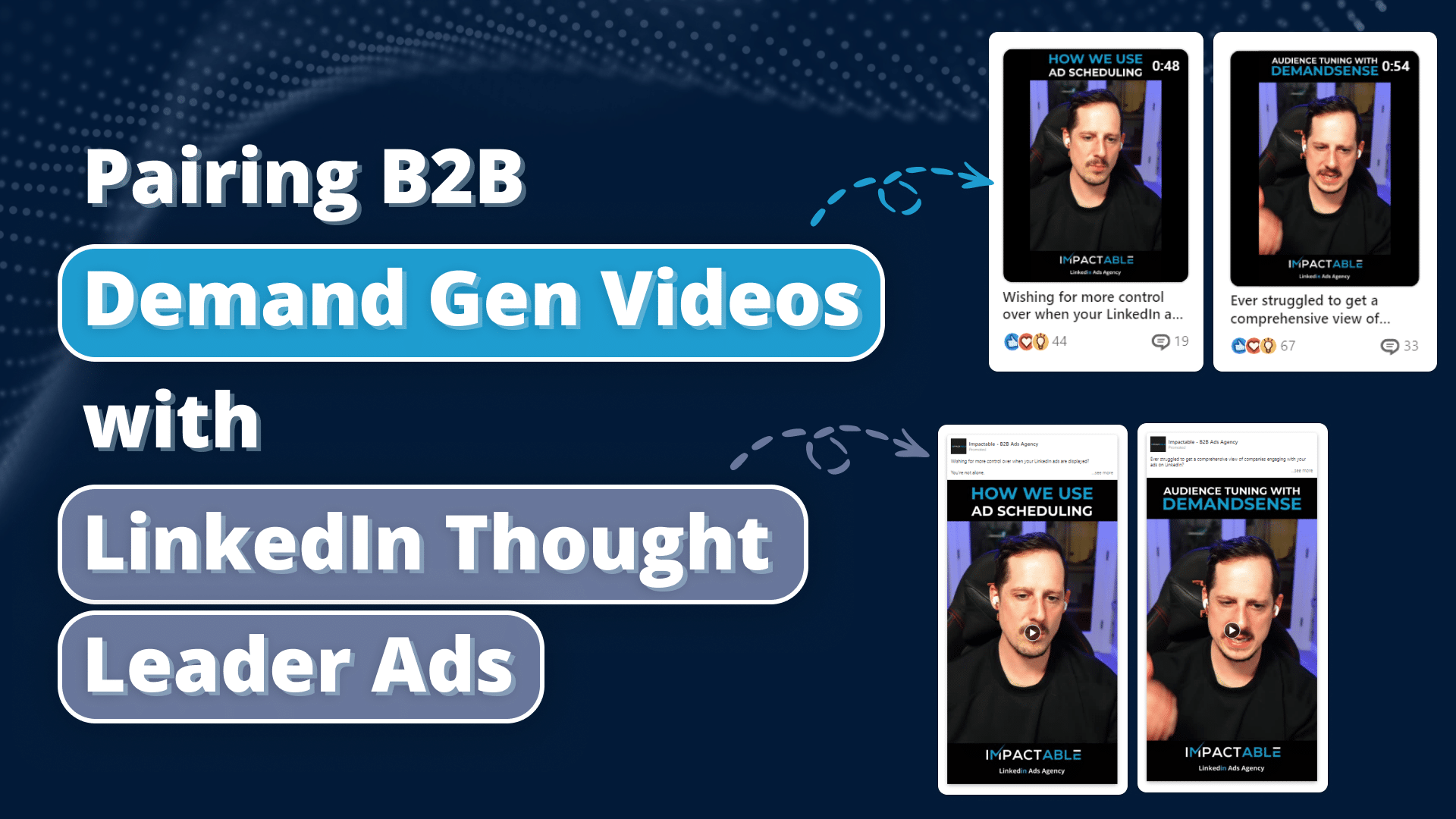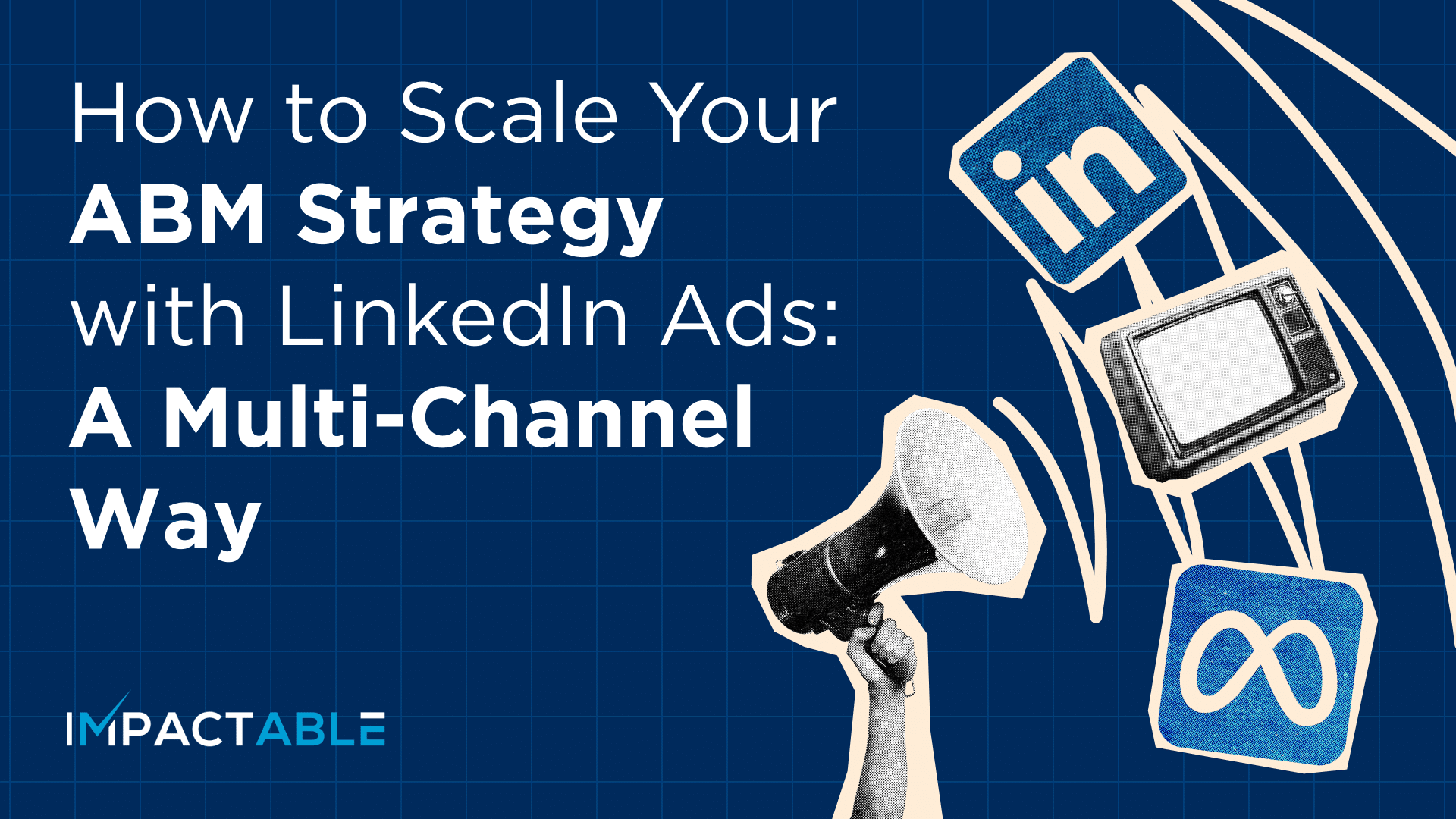What does executing an ABM approach with LinkedIn ads typically look like? Usually, people come to us with prospect lists—either a company list or a prospect list that they’ve invested in building or buying and would like to market to that group.
Most companies go through the process of identifying the companies they want to work with. They take the extra step and incur additional costs to find individuals within those companies, creating a contact list of people they’d like to target with LinkedIn ads. This involves selecting a specific, targeted group of individuals considered a) a good fit for collaboration or b) high-value accounts they’d love to sign as clients. The goal is to give this curated audience special attention and effort.
In this article, we’ll talk about common mistakes in ABM budget allocation and share practical solutions to address these issues.
Setting the Budget for ABM with LinkedIn Ads
Setting the budget for ABM with LinkedIn ads involves solving a common issue – budget misalignment. Let’s look at the top 3 mistakes we see when it comes to ABM with LinkedIn ads.
Mistake #1: Overbudgeting for smaller ABM lists
The first mistake in budgeting for a LinkedIn ads ABM approach is allocating an excessive budget to smaller lists.
For instance, let’s consider a list of 5,000 or 3,000 individuals targeted with ads. In the realm of LinkedIn ads and digital marketing, this is a comparatively small, highly focused group. However, on a platform like LinkedIn, there’s no assurance that the entire group is active on the platform. More likely, only a part of the audience is active and responsive, leading to oversaturation within the first 30 days of the campaign.
While a subset of the audience may convert in the initial 30 days, others who are less active or not on LinkedIn will miss the ads. Despite maintaining the same spending, diminishing returns become evident swiftly, typically after 30 days.
Solution:
The remedy lies in aligning the budget with the audience size, considering frequency. In cases where companies spend, say, $200 a day to saturate a group of three to 5,000, it can be deemed excessive. Assessing frequency after 30 days may reveal levels of 20 to 30, indicating a high saturation rate. While active prospects may convert rapidly, continued high spending leads to diminishing returns.
To solve this, adjusting the daily budget to a more moderate $30, $40, or $50 allows for a lower frequency, perhaps 7-10 frequency over 30 day period of time. This may result in a smaller initial impact but prevents hitting the wall of diminishing returns in subsequent months.
Supplementary measures include evaluating the criteria and potentially creating a native LinkedIn audience targeting a similar but larger group. Alternatively, continually refreshing or expanding targeted lists with budgets tailored to each can optimize results.
Mistake #2: Treating high-value ABM lists the same as other lists
The second factor affecting your budget isn’t solely the audience size; it’s also the value of the targets on your list.
Often, I see people creating ABM lists with very high-value targets—those with contract values three to five or even ten times larger than their typical clients. Deliberately curated for maximum revenue potential, these lists predominantly focus on enterprise deals. It’s important to acknowledge that the cost per click, cost per lead, and cost per conversion will be higher. Additionally, the sales cycle will be more prolonged, demanding more investment in terms of money, impressions, and time to convert individuals on this list.
Solution:
To address this, mentally segment this higher value group, allocate a more substantial budget accordingly, and allow more time.
Rather than excessively saturating them, consider extending the budget and prolonging engagement with the list. Implementing multiple campaigns targeting the same audience is a strategic move in traditional ABM LinkedIn ads approaches. Instead of simply showcasing your top ads over a limited timeframe, adopt a long-term perspective. Begin with a brand-building campaign to introduce yourself and your offerings. Subsequently, layer on a second campaign filled with reasons why they can trust your business, highlighting the results you’ve achieved for others and incorporating testimonials. By diversifying your approach, you can spread the budget across various layers.
Moreover, consider additional touches such as text ads and spotlight ads. This diversified strategy, coupled with vigilant monitoring of frequency, is essential. If you have a dream list of 200 companies, adopting a mindset that views converting 60 or 70 of these clients over two years as a worthwhile investment transforms the budgeting approach. It’s a departure from the typical 90-day cycle used for mid-market companies. For high-value, long-term client targets, budgeting for an extended period, incorporating multiple layers, and embracing a prolonged conversion cycle are key considerations.
Mistake #3: Running an ABM approach on LinkedIn ads with only Cold ads.
A common issue, which could be considered as another significant problem, is that nearly all companies employing an ABM approach on LinkedIn ads focus solely on the cold layer (first-touch campaigns to ice-cold prospects).
They acquire these lists, upload them, and operate under the assumption that these individuals, even if they’ve heard of the company, are targeted in a load of cold campaigns where creatives are thrust in front of them with the expectation of quick responses.
What often goes unnoticed is that some of these target companies, fitting the criteria for pursuit, are already familiar with the business. They may have visited the website, checked the company page, or engaged with previous ads within the last three months. Unfortunately, there’s a lack of consideration to segment a budget specifically for ABM retargeting.
Solution:
Introducing ABM retargeting might seem contradictory at first, but the rationale behind it is crucial. After putting effort into identifying companies with better traction or higher LCV in specific industries and sizes, it’s vital to recognize that some of these potential clients have already interacted with the website.
When budgeting for ABM, it’s important to allocate resources for retargeting. Criteria for this can vary. For instance, with different niche-down lists, a comprehensive master ABM list covering all accounts can be created. This list, initially utilized for cold ads, can be repurposed for retargeting based on specific criteria.
By identifying companies from the ABM list that visited the website within the last 90 days or even longer, considering the potential value of long-term engagement, a dedicated retargeting budget can be established.
Additionally, leveraging LinkedIn’s native filters is a viable option. By loading ABM lists into cold campaigns and applying filters such as website visits, company size, seniority level, and job functions related to decision-making for the product, a segmented budget can be allocated for staying in front of these warm prospects.
Many big companies, despite investing heavily in cold LinkedIn ads, often overlook incorporating retargeting strategies. The misconception may come from the belief that retargeting is diluted due to existing SEO, organic traffic, and other sources directing traffic to their website.
However, LinkedIn stands out in this regard. The platform’s ability to qualify and refine traffic, particularly in the ABM context, makes it distinct. Leveraging LinkedIn’s filters alongside other traffic sources, such as Google and SEO, aligns with the nuanced requirements of an effective ABM strategy.
Conclusion
In conclusion, the main issue is not allocating enough budget considering your audience size. To enhance your strategy, I recommend adding campaigns that leverage LinkedIn’s native filters alongside your ABM approach. Relying solely on a 100% ABM strategy without these filters and retargeting can limit your reach. It’s important to think about how active your dream list is on LinkedIn and adjust your targeting. Mixing ABM with LinkedIn’s native filters helps you connect better with your audience, making your approach more efficient and boosting your chances of conversions.


